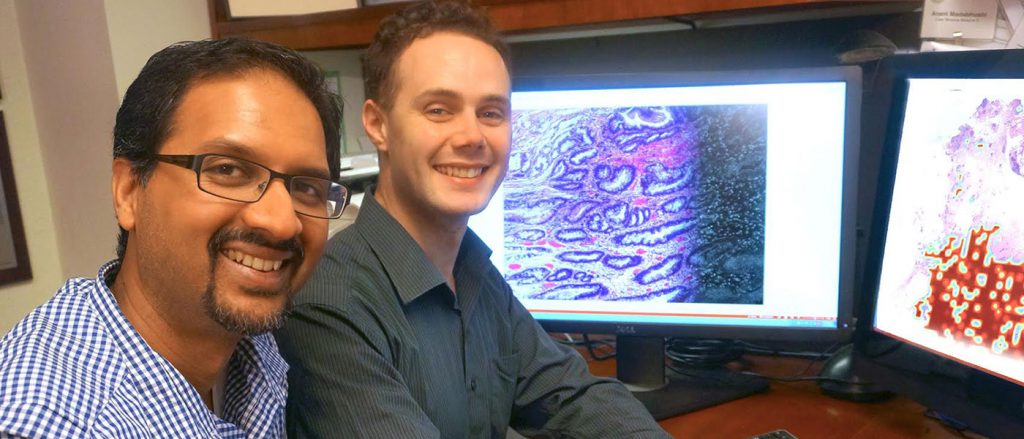 Jon Whitney, a postdoctoral research associate in the Center for Computational Imaging and Personalized Diagnostics in Case School of Engineering’s Department of Biomedical Engineering, has been named by Case Western Reserve University as a 2015 Hartwell Foundation Fellow. He was recognized for his work to reduce the need for aggressive radiation and chemotherapy on children suffering from medulloblastomas, a prevalent form of pediatric malignant brain tumors.
Jon Whitney, a postdoctoral research associate in the Center for Computational Imaging and Personalized Diagnostics in Case School of Engineering’s Department of Biomedical Engineering, has been named by Case Western Reserve University as a 2015 Hartwell Foundation Fellow. He was recognized for his work to reduce the need for aggressive radiation and chemotherapy on children suffering from medulloblastomas, a prevalent form of pediatric malignant brain tumors.
Whitney, a mechanical engineering PhD with image analysis and cancer research experience, works with primary investigator and mentor Anant Madabhushi, the F. Alex Nason professor II of biomedical engineering and one of the world’s foremost experts in digital-tissue image analysis related to predicting disease outcomes.
“I’m thankful for the opportunity to look for ways that recent advancements in technology can reduce the suffering of children,” Whitney said.
Each year, The Hartwell Foundation selects institutions to conduct an internal competition to nominate three principal investigators for a Hartwell Individual Biomedical Research Award. The awards go to investigators pursing early-stage, innovative biomedical research that could potentially benefit children but has not yet qualified for significant funding from outside sources.
For each nominee chosen by the foundation for an Individual Award, the sponsoring participating institution receives one Hartwell Fellowship that they designate to a qualified postdoctoral researcher. In 2016, Case Western Reserve received one Individual Award and, therefore, qualified for one funded fellowship.
The Hartwell Fellowship provides postdoctoral support for two years at $50,000 direct cost per year to individuals in the early stages of their biomedical research career. The support allows them to pursue specialized training as part of their professional development.
“It is the hope of The Hartwell Foundation that all Fellows will continue their research career as they complete their training and ascend to a permanent position in academia, industry or government service,” said Foundation President Fred Dombrose.
Together, Whitney and Madabhushi are using digital-image analysis of breast cancer tissue with a goal of identifying measurable features that can be associated with high- or low-risk patients with medulloblastoma, a fast-growing brain tumor that accounts for 18 percent of pediatric brain tumors. More than 70 percent of pediatric medulloblastomas are diagnosed in children under age 10, according to the American Brain Tumor Association.
Using patient-anonymous images of cancerous tissue derived from standard-of-care histology slides digitized by researchers from the Children’s Hospital in Los Angeles, Whitney and Madabhushi seek to compare unique features in the images with clinical outcome information associated with the aggressiveness of cancer. The features will then be used to train computer-based classification algorithms, resulting in testable models that can be quantitatively evaluated to determine the accuracy of their methodology. They expect that the classification of such image features should help guide clinicians in planning treatment.
Earlier this year, the Hartwell Foundation named Case Western Reserve University among its national Top 10 Centers of Biomedical Research. The prestigious designation allows Case Western Reserve to nominate three researchers per year for a Hartwell Individual Biomedical Research Award.
Case Western Reserve has seven faculty who are current or former Hartwell investigators. Whitney is the third young researcher at the university to be awarded a Hartwell Fellowship.
“The Hartwell Foundation has been extraordinary in its support of research to benefit children,” said Lynn Singer, deputy provost and vice president of academic affairs, “and we are honored to participate in the foundation’s program.”

